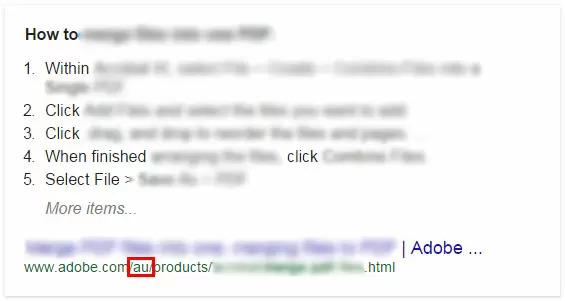Geotargeting challenges and tips
One of the biggest challenges with SEO for multilingual and multinational websites is to ensure that searchers in various countries find your locally-relevant content. In this blog, we’ll talk about geotargeting – the practice of customizing content to a specific market based on the geographic location of potential customers and, most importantly for SEO, ensuring this content is findable in local search.
Structuring multiregional websites
Companies targeting customers in multiple regions have the following options to structure their international sites:
- Country-code top-level domains (ccTLDs) tied to a specific country, e.g. site.fr for France and site.de for Germany
- Subdomains or subdirectories on generic top-level domain (gTLD) such as .com, .org, .net:
- Subdomains – fr.site.com, de.site.com
- Subdirectories – site.com/fr/, site.com/de/
- URL parameters (generally, not recommended), e.g. site.com?loc=de, site.com?country=france.
Geotargeting signals
Google uses many signals to identify target audiences for country sites – ccTLDs, server location, the use of local language and currency, local phone numbers and physical addresses, Google My Business listings, and links from other local sites are among them. Webmasters can also set a country target in the International Targeting section of Google Webmaster Tools for country subdomains or subdirectories on generic top-level domains. Unfortunately, those signals may not be sufficient for Google to properly map your international sites to your target countries and display relevant content to searchers. Many companies prefer to host international sites in subdirectories of a single domain, some country sites may not be translated from English, B2B sites lack pricing information, physical addresses, and local business listings, and many websites use distributed content delivery networks (CDNs) or are hosted in a country with better webserver infrastructure, so Google tries not to rely on any of these signals alone.
“Which one should I pick?” Google is wondering
For lack of sufficient geotargeting information, Google may present local searchers with results that are not actually targeted at them, which leads to lower click-through rates from natural search, higher bounce rates, and poorer user experience and business KPIs. Consider a few possible scenarios where site are facing geotargeting challenges:
- Global English (generally, US) pages are exposed in local search – google.co.uk, google.com.au, google.ca – where UK, Australian, and Canadian sites, respectively, should be ranking instead
- Global English pages outrank localized content for branded searches (i.e. company brand and product names)
- Multiple sites in one language compete with each other: for example, a company’s German site is beating Austrian and Swiss German sites in local search, and the French site is outperforming Swiss French and Canadian French – for both branded and non-branded queries.
This may be happening for two main reasons. For one, your global English site (or the predominant site in a group of same-language sites) is inherently more authoritative with more inbound links, which are a very important SEO ranking factor. Another reason is that Google treats same or similar content available on different URLs as duplicate content and therefore assigns lower relevancy to the duplicate pages and ranks them lower or, worse, stops displaying them in search results.
Duplicate content warnings in Google Webmaster Tools
You can validate if Google treats your international pages as duplicate content by checking your main Webmaster tools account (site.com) for duplicate title tags and duplicate meta descriptions in ‘Search Appearance > HTML Improvements’ section. In the example below, French-language sites for Belgium, Canada, Switzerland and France are viewed as duplicates:
GWMT Duplicate Descriptions
Once hreflang annotations are in place, you should see Google remove duplicate title and duplicate meta description warnings – they will no longer be treated as such after you’ve made it clear for Google that they target different regional audiences.
HrefLang to the rescue
To help webmasters identify the correct URLs to serve to regional searchers, a few years ago Google introduced an amazing protocol to achieve desired geotargeting results: hreflang tags, also referred to as rel-alternate-hreflang or country and language annotations. These annotations can be placed in XML sitemaps, HTTP headers, or on-page HTML link elements. Google provides detailed hreflang instructions in Webmaster Tools help, so we won’t cover them here. Instead, we’d like to present the results from our own implementation. In a related post, we provide a few tips and touch on common misconceptions and mistakes. 
Adobe HrefLang case study
Adobe has 60 regional sites in 30+ languages. We started off with a pilot covering the top 15 product pages for 10+ regional sites and focused on the UK site to measure the impact. About 10 days after the sitemaps were submitted to Google, we saw a spike in SEO visits to UK pages. In fact, the increase in daily average entry page SEO visits to the UK pages was a whopping 720% and average daily revenue grew over 400%.
The BrightEdge SEO Platform helped us track how rankings were changing – UK pages started replacing US pages in Google UK:
Shortly after Google rolled out Quick Answers globally, we started seeing not only US pages showing in Quick Answers but also regional URLs displayed in regional search engines – yet another sign of proper hreflang implementation: After the pilot, we rolled out hreflang sitemaps to all major lines of businesses and have consistently seen strong results.


